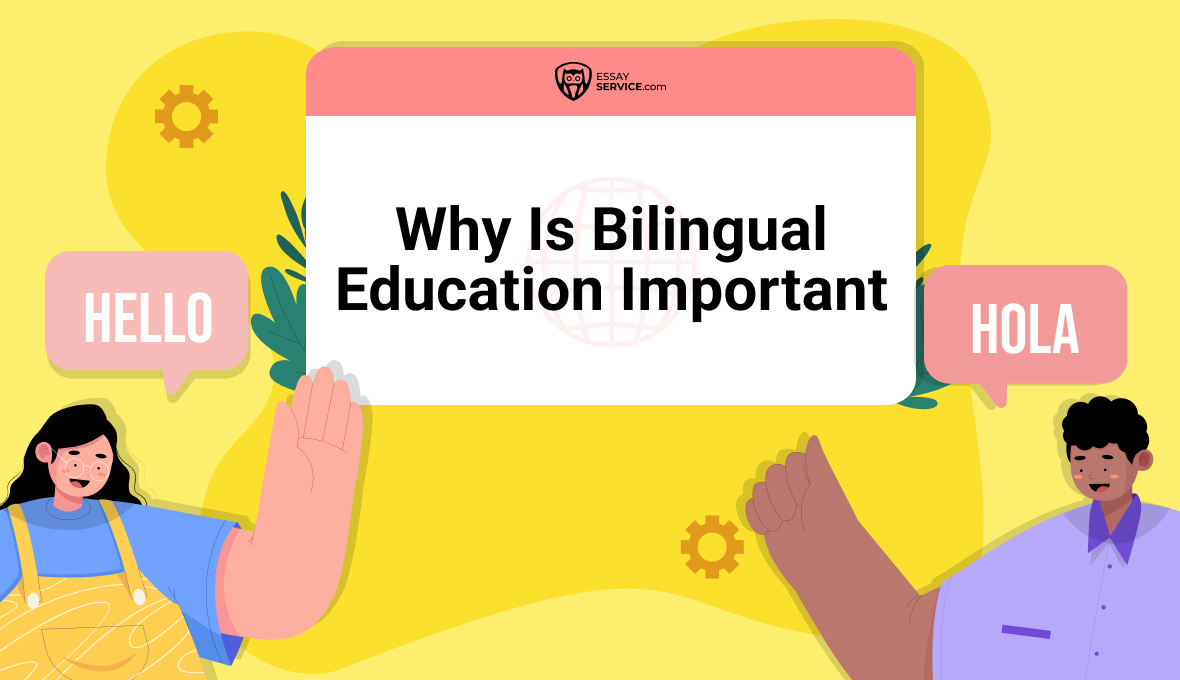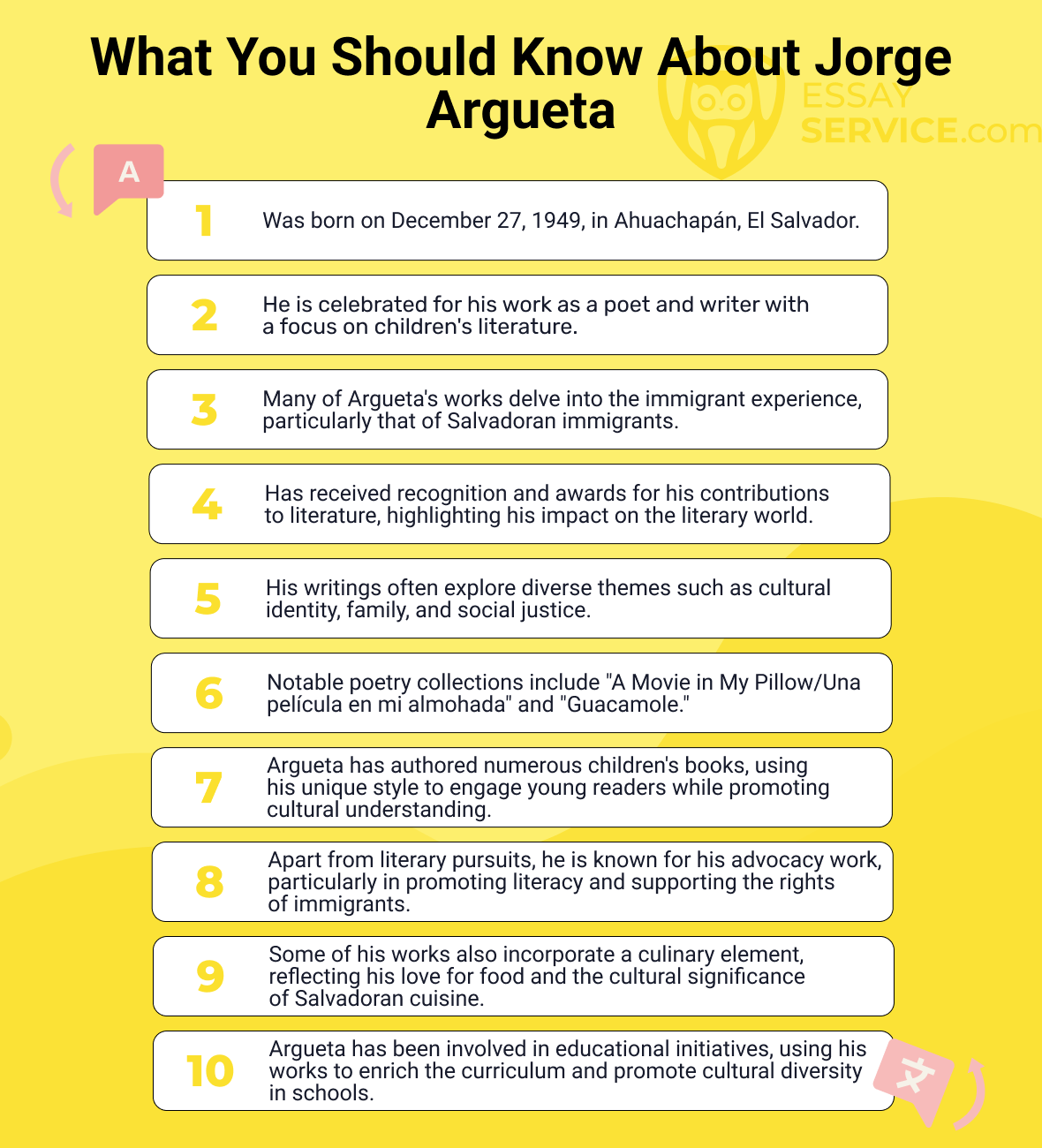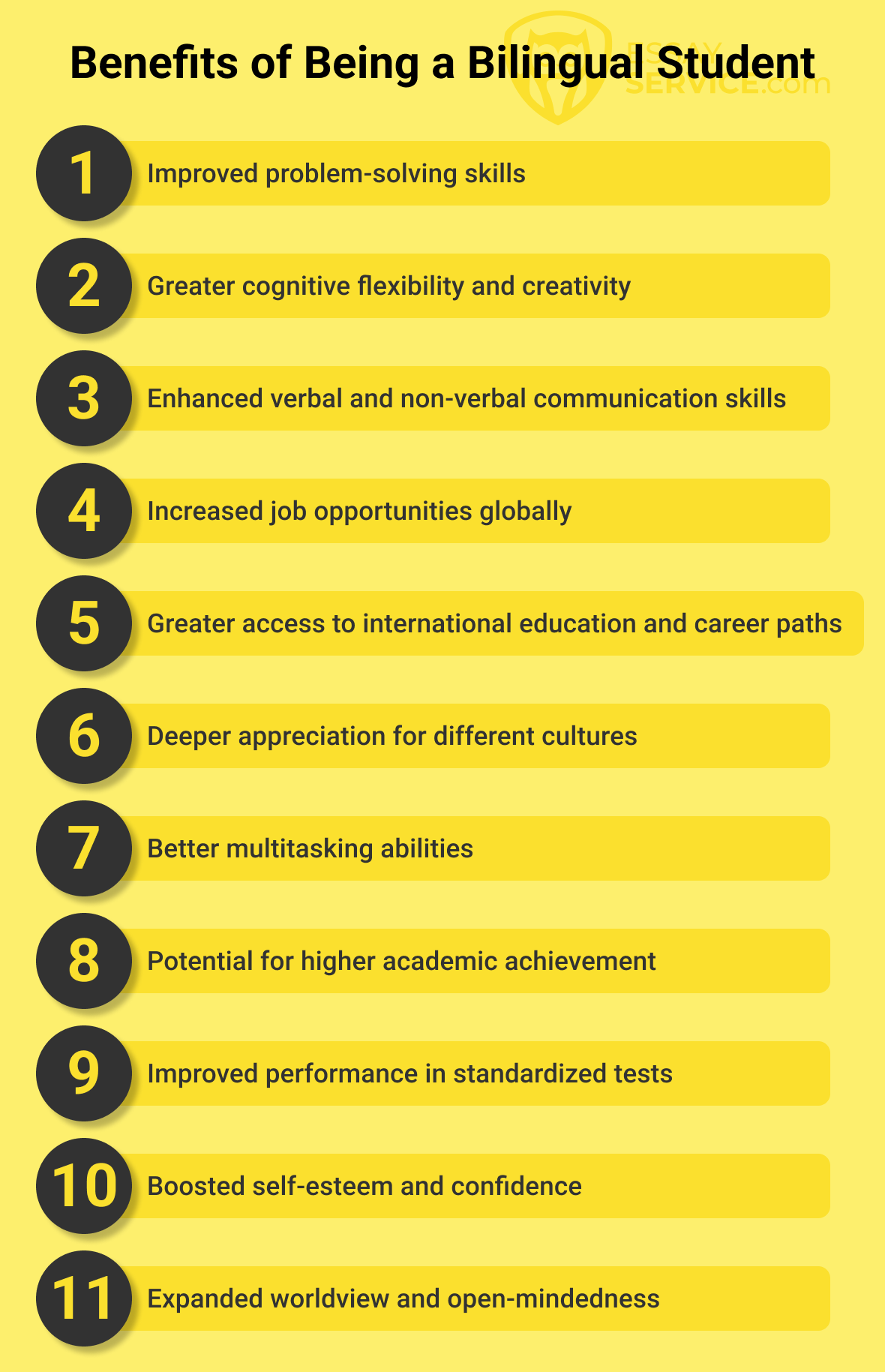
Why Is Bilingual Education Important For Children in Schools Today?
There were over 7,000 languages spoken worldwide, each a unique conduit for cultural expression and identity. Despite this linguistic richness, a concerning trend persists – with every passing year, numerous languages face the risk of extinction, threatening to erase centuries of cultural heritage and knowledge. However, bilingual education emerges as a beacon of hope, actively preserving linguistic diversity while equipping learners with invaluable cognitive and socio-cultural skills.
Facts underscore the profound impact of bilingualism on cognitive development. Research conducted by the American Academy of Arts and Sciences reveals that bilingual children possess enhanced executive function, including superior problem-solving abilities and heightened cognitive flexibility. Furthermore, a study published in the Journal of Experimental Child Psychology demonstrates that bilingualism strengthens the brain's resilience against age-related cognitive decline, offering a protective effect that prolongs mental acuity in later years.
In the United States alone, where linguistic diversity is celebrated as a hallmark of national identity, bilingualism bridges cultural divides and empowers individuals to navigate an increasingly multicultural society. According to a report by the U.S. Department of Education, students enrolled in bilingual programs exhibit higher levels of academic achievement and cultural competence, positioning them for success in an increasingly globalized workforce.
What Does Bilingual Mean?
Bilingualism refers to the ability of an individual to proficiently speak and understand two different languages. This linguistic dexterity allows individuals to navigate and communicate effectively in diverse cultural and linguistic contexts. Being bilingual provides the capacity to switch seamlessly between languages, not only in terms of verbal expression but also in comprehension and cognitive processing. The acquisition of bilingualism can occur through various means, such as growing up in a multilingual environment, formal language education, or immersion experiences in different linguistic communities.
Interesting facts about bilingualism abound, revealing its widespread prevalence and impact on global societies. As of the early 21st century, it was estimated that more than half of the world's population is bilingual or multilingual. In countries like India, where linguistic diversity is particularly rich, a significant portion of the population routinely uses multiple languages in their daily lives. Bilingualism is not limited to specific regions or demographics; it is a global phenomenon that transcends borders.
What Is Bilingual Education?
Bilingual education is an academic approach that aims to provide students with proficiency in two languages by incorporating both languages into the curriculum. The primary goal is to foster linguistic proficiency in both languages while promoting academic achievement and cultural competence. In bilingual education programs, students are exposed to content instruction in their native language and a second language, with the objective of developing proficiency in both.
Studies have shown that bilingual education for children often outperforms its monolingual counterpart in dealing with cognitive tasks, demonstrating enhanced executive functions such as problem-solving, multitasking, and creativity. In addition to these cognitive advantages, bilingual education contributes to improved metalinguistic awareness – the ability to think about language and understand its structure – which enhances overall language skills and literacy.
Furthermore, bilingual education plays a pivotal role in preserving linguistic diversity and preventing the extinction of languages. According to UNESCO, a language disappears every two weeks, threatening to erase centuries of cultural heritage. Bilingual education serves as a powerful tool in the preservation of endangered languages, ensuring that future generations maintain a connection to their linguistic roots. In the United States, where linguistic diversity is celebrated, bilingual education has gained prominence as an effective strategy for supporting English language learners while preserving their native languages.
What is bilingual education in the global workforce? Bilingualism is increasingly recognized as a valuable asset. According to this report, bilingual students are in high demand across various industries, from healthcare to business, as they can bridge communication gaps in multicultural settings.
Educational Benefits
Numerous studies have demonstrated the positive impact of the ability to communicate in several languages on various cognitive functions in bilingual children and college students, leading to enhanced academic performance. Here are some real facts and data highlighting the academic benefits for bilingual students:
Cognitive Flexibility and Problem-Solving Skills
- A study published in the journal "Psychological Science" found that bilingual children exhibit superior cognitive flexibility compared to monolingual peers.
- This cognitive flexibility allows them to adapt more easily to new or unexpected situations, a skill that is advantageous in academic settings and beyond.
Metalinguistic Awareness and Literacy Skills
- Research conducted by the National Institutes of Health (NIH) suggests that bilingualism is associated with heightened metalinguistic awareness—the ability to think about and understand language structure.
- This awareness contributes to improved literacy skills and a deeper understanding of language nuances.
Executive Function and Attention Control
- The American Academy of Arts and Sciences reports that bilingual individuals often demonstrate enhanced executive function, including better attention control, problem-solving abilities, and working memory.
- Such cognitive skills are crucial for academic success, particularly in tasks that require concentration and strategic thinking.
Improved Standardized Test Performance
- According to a study published in the "Journal of Educational Psychology," bilingual students have been found to outperform their monolingual counterparts on standardized tests.
- The study indicates that bilingualism may contribute to better performance in areas such as reading and math.
Preservation of Native Language and Cultural Identity
- Bilingual education not only supports the acquisition of a second language but also helps in preserving the student's native language.
- Maintaining proficiency in the native language contributes to a stronger sense of cultural identity, which has positive psychological effects and can foster a positive attitude toward learning.
Academic Achievement and Graduation Rates
- The U.S. Department of Education reports that bilingual education programs have been linked to higher academic achievement and improved graduation rates among English language learners.
- Bilingual students often show increased engagement in school, leading to better educational outcomes.
There’s well-supported empirical evidence of why is bilingual education important, with data indicating positive impacts on cognitive flexibility, metalinguistic awareness, executive function, standardized test performance, and overall academic achievement.

Benefits of Bilingual Schools
Bilingual schools offer a unique educational environment that goes beyond language acquisition, providing students with a range of cognitive, academic, and socio-cultural benefits. Here are several key advantages associated with benefits of being bilingual when studying in school:
Cognitive Benefits
- A study published in the journal "Psychological Science" (2011) found that bilingual children consistently outperformed monolingual children in tasks requiring cognitive flexibility and problem-solving skills.
- Research conducted by the National Institutes of Health (NIH) in 2014 demonstrated that bilingual individuals tend to have a more developed prefrontal cortex, a brain region associated with executive functions like attention and decision-making.
Academic Achievement
- The American Educational Research Journal published a study in 2017 that indicated that students in dual-language immersion programs, a form of bilingual education, performed better on English language arts assessments compared to their peers in English-only programs.
- A comprehensive meta-analysis conducted by the National Clearinghouse for English Language Acquisition (NCELA) in 2006 found positive effects of bilingual education on academic achievement, especially for English language learners.
Global Perspective and Cross-Cultural Competence
- The American Council on the Teaching of Foreign Languages (ACTFL) emphasizes that bilingual education fosters cultural competency, preparing students to engage in a globalized society with an understanding of diverse perspectives.
- A study published in the International Journal of Bilingual Education and Bilingualism in 2016 found that bilingual education positively impacted students' intercultural competence, promoting an appreciation for different cultures.
Career Opportunities
- The New American Economy's report in 2017 highlighted the increasing demand for bilingual skills in the job market. It revealed that between 2010 and 2015, the number of job postings in the United States requiring bilingual candidates more than doubled.
- A survey conducted by the Economist Intelligence Unit in 2012 reported that 64% of business executives consider a second language to be an important skill for employees in today's globalized business environment.
Preservation of Language and Cultural Identity
- Research published in the Journal of Language, Identity & Education in 2015 emphasized the role of bilingual education in maintaining and promoting the heritage languages of immigrant communities, contributing to cultural identity preservation.
- The International Journal of Bilingual Education and Bilingualism published a study in 2018 that highlighted the positive correlation between bilingualism and a strong sense of cultural identity among students.
Enhanced Problem-Solving and Critical Thinking
- A study published in the Journal of Memory and Language in 2015 demonstrated that bilingualism positively influences cognitive processes, leading to improved critical thinking skills and problem-solving abilities.
- Research conducted by the University of Chicago in 2016 found that bilingual individuals showed more effective processing of information in tasks requiring attention and cognitive control.
While these studies provide empirical evidence supporting the benefits of bilingual education, it's important to note that the field is dynamic, and ongoing research continues to explore the nuanced impacts of bilingualism on various aspects of cognition and education.
Learning Outside the School
Studying and learning as a bilingual person not only enhances linguistic proficiency but also opens up a rich world of literature across multiple languages. It provides bilingual learners with a unique advantage when it comes to reading books, poems, and other sources of information available in languages other than English. Bilingualism fosters a deep understanding of language nuances, allowing individuals to appreciate the subtle intricacies of literature in both their native and acquired languages.
An exemplary advocate for the educational benefits of bilingual literature is Jorge Argueta, an acclaimed author who writes books specifically tailored for bilingual children. Argueta's works not only celebrate linguistic diversity but also serve as valuable educational tools. Through his captivating narratives and bilingual storytelling, Argueta aims to promote language proficiency and cultural appreciation among young readers. His books create an immersive experience for bilingual children, allowing them to explore different languages and cultures seamlessly while fostering a love for literature.
Jorge Argueta – A Poet and Writer from Salvador

Jorge Argueta, a celebrated Salvadoran poet and author, is a prominent figure in the world of bilingual children's literature. Born in rural El Salvador, Argueta faced the challenges of civil unrest and conflict, eventually seeking refuge in the United States during the Salvadoran Civil War. His personal experiences as an immigrant deeply influenced his writing, providing a poignant backdrop for his exploration of themes related to identity, culture, and resilience.
Argueta's journey to becoming an author for bilingual children began when he recognized the lack of diverse and culturally rich literature for young readers. Drawing from his own multicultural background, he set out to fill this gap by creating engaging and educational books that celebrate linguistic diversity. Jorge Argueta poems and books are characterized by poetic and lyrical storytelling style, often infused with vivid illustrations, which capture the imaginations of young readers while introducing them to the beauty of languages beyond their own.
Through his works, such as "A Movie in My Pillow" and "Guacamole," Jorge Argueta delivers a powerful message of inclusivity and cultural pride. He aims to instill a sense of belonging in bilingual children by validating their language backgrounds and cultural heritage. Argueta's books serve as bridges between languages and cultures, encouraging young readers to embrace their identities while fostering empathy and understanding for others.
Best Books for Bilingual Children by Jorge Argueta
Jorge Argueta has written several notable books that celebrate linguistic diversity, cultural heritage, and the immigrant experience. Here is a list of the most important Jorge Argueta books, along with short descriptions for each:
- "A Movie in My Pillow" (1998) – This poignant collection of poems offers a vivid portrayal of Jorge Argueta's personal journey as an immigrant from El Salvador to the United States. The poems explore themes of displacement, resilience, and the quest for identity.
- "Guacamole: Un poema para cocinar/A Cooking Poem" (2012) – In this bilingual picture book, Argueta combines poetry and a simple guacamole recipe to create a delightful culinary and cultural experience. The book invites young readers to engage with the process of making guacamole while celebrating the flavors of Latin American cuisine.
- "Tamalitos: Un poema para cocinar/A Cooking Poem" (1999) – Another delightful bilingual cooking poem, "Tamalitos" introduces children to the art of making tamales. Through poetic language and vibrant illustrations, Argueta captures the cultural significance of this traditional Mesoamerican dish.
- "Sopa de frijoles/Bean Soup" (2002) – Sopa de Frijoles by Jorge Argueta follows the heartwarming story of a young boy who learns to appreciate the simple joys of life, including his grandmother's bean soup. Argueta weaves a narrative that emphasizes family, love, and the importance of cultural traditions.
- "La Fiesta de las tortillas/The Festival of Tamales" (2003) – Set against the backdrop of a festive celebration, this bilingual book introduces readers to the cultural significance of tamales. Through lively illustrations and engaging storytelling, Argueta captures the spirit of community and joy associated with this traditional food.
- "Jalapeño Bagels" (1996) – In this multicultural tale, a young boy named Pablo combines elements of his Jewish and Guatemalan heritage in a unique and delicious way—by bringing jalapeño bagels to his school's International Day. The book celebrates the beauty of cultural fusion and acceptance.
- "Jorge Tetl Argueta's ABC: Bilingual Poems" (2016) – A bilingual alphabet book that introduces young readers to the richness of language through poetic exploration. Each letter is accompanied by a poem that weaves together English and Spanish, providing a delightful and educational experience.
- "En el corazón de la montaña: Una narrativa sobre la vida de Feliciano Ama" (2011) – In this bilingual narrative, Jorge Argueta tells the life story of Feliciano Ama, a Salvadoran artist and poet. Through Ama's experiences, readers gain insights into the challenges and triumphs of an artist dedicated to preserving cultural heritage.
- "Salsa: Un Poema Para Cocinar" (2015) – The Salsa Jorge Argueta book combines poetry with a simple recipe to create an engaging and educational experience for young readers. In "Salsa," Argueta introduces children to the joy of making salsa, emphasizing the cultural and culinary aspects of this popular condiment.
Benefits of Being Bilingual

Being bilingual offers a myriad of cognitive, academic, and socio-cultural benefits that extend far beyond the ability to communicate in multiple languages. One significant advantage is the enhancement of cognitive functions. Research indicates that bilingual individuals often exhibit superior executive functions, such as problem-solving skills, multitasking abilities, and heightened cognitive flexibility. The constant need to switch between languages and inhibit one language while using another appears to strengthen the brain's overall cognitive control, resulting in a more agile and adaptable mind.
Bilingualism has been linked to improved literacy skills and academic achievement. Studies have shown that bilingual students tend to outperform their monolingual peers on standardized tests in subjects such as reading and math. The exposure to multiple languages not only refines linguistic abilities but also fosters metalinguistic awareness – an understanding of the structure and function of language. This heightened awareness of bilingual children contributes to improved analytical skills and a deeper comprehension of linguistic nuances, which can positively impact academic performance across various subjects.
Moreover, being bilingual brings about significant socio-cultural benefits. Bilingual individuals are equipped to navigate an increasingly interconnected world with ease, fostering cross-cultural understanding and global communication. They possess a unique ability to bridge language gaps, whether in social interactions, professional settings, or diplomatic relations. Bilingualism contributes to a more inclusive and diverse society, breaking down language barriers and promoting mutual respect among people of different linguistic backgrounds. Ultimately, the benefits of bilingualism extend far beyond language proficiency, enriching cognitive abilities, academic success, and cultural awareness.
Interesting Facts About Bilingualism You Probably Didn’t Know
- Children exposed to a second language early often nail pronunciation and fluency.
- Bilinguals effortlessly switch languages mid-convo, showcasing linguistic agility.
- Bilingual brains structurally differ, revealing the cognitive impact of managing two languages.
- Speaking two languages delays cognitive decline in older age, a brain-boosting bonus regarding bilingualism and dementia.
- Bilinguals often display a natural aptitude for music, as the brain areas responsible for language and music overlap.
- Bilingual individuals tend to have enhanced memory skills attributed to managing and recalling information in two languages.
- Juggling languages strengthens multitasking abilities, making bilinguals adept at handling various tasks simultaneously.
- The language one speaks can influence perception. Bilinguals may perceive the world differently depending on the language they are using.
- Different languages can evoke different emotional responses, showcasing the deep connection between language and emotion for bilingual individuals.
- Bilinguals often excel in problem-solving tasks, showcasing advanced cognitive abilities beyond linguistic skills.
- Bilingualism is an asset in an increasingly globalized world, offering individuals a competitive edge in diverse professional and social contexts.
Summary
So, why is bilingual education important? Primarily, it is crucial in fostering linguistic diversity, cognitive development, and cross-cultural understanding. By providing students with proficiency in two languages, bilingual education not only enriches their communication skills but also enhances their cognitive flexibility and problem-solving abilities. Moreover, bilingual education promotes inclusivity by validating students' linguistic and cultural backgrounds, creating a supportive learning environment where diversity is celebrated.
Frequently asked questions
New posts to your inbox!
Your submission has been received!



